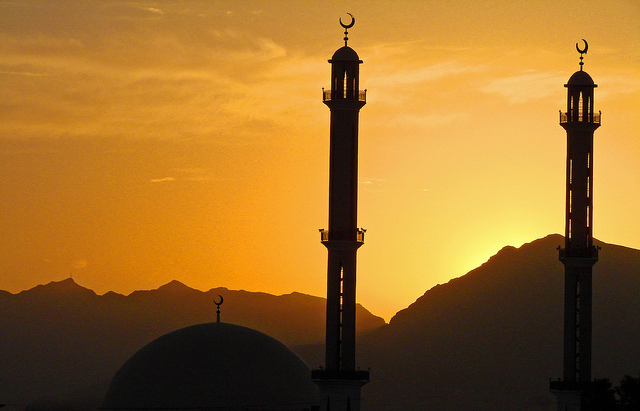On Dec. 16, a Taliban attack on the Army Public School in Peshawar, Pakistan left 132 children, as well as 13 adults, dead. In the New York Times, Declan Walsh reports that “the Red Mosque seemed a nearly untouchable bastion of Islamist extremism in Pakistan.” To refresh your memory, in 2007, the two Islamic militants running Lal Masjid, known as the Red Mosque, in Islamablad ― the brothers Maulana Abdul Aziz and Abdul Rashid Ghazi ― called for the overthrow of the Pakistani government.
Their supporters then engaged in violent demonstrations and clashes with the authorities. Finally, when they set fire to the Ministry of Environment building and attacked the armed forces guarding it, the military responded. After it besieged Lal Masjid, a special operations unit it stormed it. The tragic outcome was 154 dead including Abdul Rashid Ghazi. The mosque survived though with Maulana Abdul Azid (famous for escaping the siege dressed like a woman) at the helm. Walsh writes:
On Friday evening, though, the tables were turned when hundreds of angry protesters stood at the mosque gates and howled insults at the chief cleric — a sight never seen since the Taliban insurgency began in 2007.
Have Pakistanis finally had enough? Walsh explains that the attack was
… a violent cataclysm that has traumatized the country. … united by grief, rage and political necessity, Pakistanis from across society are speaking with unusual force and clarity about the militant threat that blights their society.
In fact
For the first time, religious parties and ultraconservative politicians have been forced to publicly shun the movement by name. And while demonstrations against militancy have been relatively small so far, they touched several cities in Pakistan, including a gathering of students outside the school in Peshawar.
However
Though there is little doubt that the Peshawar massacre has galvanized Pakistani society, the question is whether it can become a real turning point for [Pakistan].
Especially since
… Pakistan has been here before. The country has suffered countless wrenching tragedies — the death of Benazir Bhutto in 2007, as well as attacks on mosques, markets and churches — only for rage to fizzle into nothing.
Adding insult to injury
… after the Taliban attack on the teenage rights campaigner Malala Yousafzai, a resulting backlash against Western support for her made her the target of smears and vitriolic criticism.
Thus
… for all the fighting talk, many are skeptical that the anger and tears of this week can make a sustained change. … The extraordinary [demonstrations] at the Red Mosque would only be significant if they were replicated in numbers across Pakistan, said Chris Cork, an editorial writer with The Express Tribune newspaper.
But, he said, civil society is still weak and disorganized, riven by fear of the Taliban and the harsh gaze of the intelligence agencies.
In other words
“There isn’t the infrastructure, the will, the people with organization, ability and visibility to lead it.”
The wave of anti-Taliban sentiment is “probably just a blip,” he added. “Quite honestly, give it a month and it will have faded.”
In the wake of the school shootings in Newtown, Connecticut, the U.S. version of that last sentence can be amended to read:
The wave of anti-gun sentiment is “probably just a blip,” he added. “Quite honestly, give it a month and it will have faded.”
The inability of mass shootings of children to lead to reform is the sign of a citizenry that’s either frightened or deluded or both. Pakistan’s afraid that without the assistance of Islamist extremists it can’t keep India at bay. The United States is unable to see how unconstrained access to guns doesn’t help us defend ourselves from school shooters like Adam Lanza, but enables their attacks.

